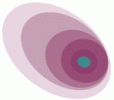Refugee Health
- Refugee Health Home
- About
- Statistics
- Stories from Minnesota Refugees
- Refugee Health Assessment Coordination
- For Resettlement Agencies
- For LPH and Health Care Providers
- For Community Sponsors
- Directories for Organizations Serving Diverse Communities
- Health Education Materials
- Trainings and Events
- Center of Excellence in Newcomer Health
Spotlight
 eSHARE
eSHARE
eSHARE (Electronic System for the Health Assessment of Refugees) frequently asked questions and informational flyer.
Download PDF version of the frequently asked questions formatted for print:
eSHARE FAQs (PDF)
Download PDF version of the eSHARE informational flyer:
eSHARE (PDF)
Frequently Asked Questions
On this page:
What is eSHARE?
What will change if we start using eSHARE?
What are the BENEFITS to using eSHARE?
Is eSHARE easy to use?
Is eSHARE safe and secure?
Future of eSHARE and Disease Surveillance in Minnesota...
More information
What is eSHARE?
The Electronic System for Health Assessment of Refugees, or eSHARE, is a web-based application developed by the MDH Refugee Health Program (RHP) for collecting demographic and domestic refugee health screening results to conduct disease surveillance activities.
What will change if we start using eSHARE?
Currently, health screening results are submitted to MDH on a paper form called the Minnesota Initial Refugee Health Assessment Form (a.k.a. the "pink form"). eSHARE replaces this paper-based reporting system by allowing users to receive notice of new arrivals and enter screening results online into the MDH secure database. Submitting the paper "pink form" is no longer required for those using eSHARE.
Notification to Local Public Health (LPH) and health providers of a refugee planning to resettle in the area remains unchanged. Overseas medical paperwork and arrival forms received by MDH will still be submitted by mail to the LPH agency or health provider.
What are the BENEFITS to using eSHARE?
Paperless Reporting System: Completing and submitting a paper form to MDH is no longer required. All users have immediate access to health screening summary data.
Report Feature: All eSHARE users have the capacity to generate real-time demographic and health summary reports. Users can specify report parameters such as arrival dates, country of origin, county of arrival, and/or a health clinic of interest. Reports are produced into a printable, easy-to-read PDF file.
Enhanced Surveillance Capacity: Electronic reporting increases the capacity to conduct real-time disease surveillance in Minnesota on emerging and existing health issues.
Is eSHARE easy to use?
Yes, key eSHARE features such as the patient search functions, generating reports, and tabbing sequences were designed for quick, easy data entry and retrieval.
Is eSHARE safe and secure?
Yes, eSHARE is a secure, web-based system. eSHARE is available through internet access with any java script enabled browser (Internet Explorer, Firefox, etc.). Each eSHARE user is provided with a unique Username and Password assigned by the RHP to access the system.
Users are trained in addressing security issues and must sign a contract prior to using eSHARE.
Future of eSHARE and Disease Surveillance in Minnesota
Enhanced versions of eSHARE are likely in the future, incorporating new features and feedback from users. The eSHARE system is linked to a larger electronic disease surveillance system at MDH called MEDSS: Minnesota Electronic Disease Surveillance System.
More information
If your agency is interested in learning more about eSHARE, please contact refugeehealth@state.mn.us.